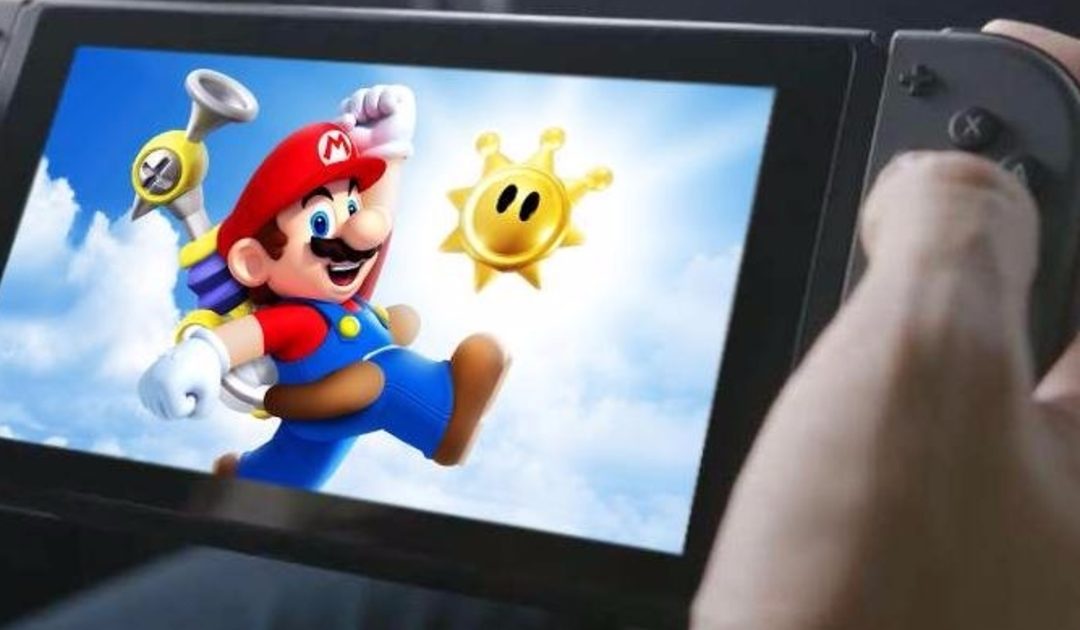
by Stone Marshall | Feb 11, 2018 | Awesome Book News, Free, Intro, Minecraft News, Minecraft questions, news, parent-news, State of Stone, Stone Marshall Book News, Stone Marshall Books, Stone Marshall Club, Stone Marshall Minecraft Adventures, Uncategorized |
Nintendo Switch will be able to play GameCube games via its Virtual Console service, three separate sources have confirmed to Eurogamer.
GameCube support is already tested and working, we understand, and three Nintendo games have already been prepped for Switch.
Those games are Super Mario Sunshine, Luigi’s Mansion and Super Smash Bros. Melee.
Wii, Wii U and 3DS have all offered a Virtual Console service for downloading games released on earlier Nintendo hardware. Switch will be no different.
And while the number of platforms to be offered on Switch’s Virtual Console has yet to be nailed down, we’ve heard that there should be an upgrade programme similar to that available on Wii U, where earlier purchases of Virtual Console NES games can be ‘upgraded’ for a small fee rather than being bought again at full price.
We’ve also heard that Nintendo Switch’s Virtual Console is being engineered by (Nintendo European Research and Development) NERD, the studio behind the recent NES Mini micro-console which sold out in many stores ahead of Christmas.
Up next on its slate? A version of the GameCube Animal Crossing is currently being tested for potential release.
Animal Crossing is a particularly interesting title as it included more than a dozen NES classics – such as Donkey Kong, Mario and Zelda – to obtain and play within the game.
Nintendo is also looking at Switch support for the Wii U’s GameCube controller adaptor peripheral, although we understand that a final decision has not yet been made.
Fans have been asking for GameCube titles to be made available on Virtual Console for years – so, why now?
Switch’s increased power from Wii U is certainly a factor. Digital Foundry actually ran tests to see how the GameCube’s Dolphin emulator runs on Nvidia Tegra X1 mobile technology – the chipset which powers Switch.
The results were promising and suggested Switch should be able to run each game at least as well as its original state. How much better, of course, will depend on Switch’s final hardware.
Another big push behind GameCube Virtual Console, we hear, is the desire within Nintendo to continue making Super Smash Bros. Melee easily playable. 15 years on from its initial release, Melee is still a hugely popular game in the esports scene, and a regular major draw at huge competitions such as Evo.
Melee’s easy availability via Switch Virtual Console will help matters, rather than relying on aging hardware or third-party emulation.
Nintendo declined to comment when contacted for this article.
Switch is set to launch in March 2017, and be revealed in further detail at an event in early January.
Eurogamer recently reported that the Switch would have a 6.2″ 720p multi-touch screen and next year host its own version of Pokémon Sun and Moon, code-named Pokémon Stars.
Sources: Nintendo Switch will have GameCube Virtual Console support
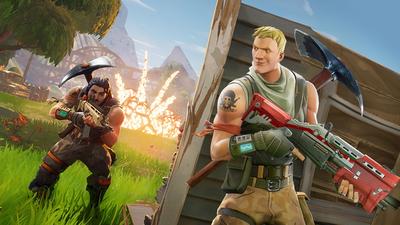
by Stone Marshall | Feb 11, 2018 | Awesome Book News, Free, Intro, Minecraft News, Minecraft questions, news, parent-news, State of Stone, Stone Marshall Book News, Stone Marshall Books, Stone Marshall Club, Stone Marshall Minecraft Adventures, Uncategorized |
When Epic added a battle royale mode to Fortnite in September last year, PlayerUnknown’s Battlegrounds publisher Bluehole was pretty upset.”We are concerned that Fortnite may be replicating the experience for which PUBG is known,” said Chang Han Kim, then its executive producer and now CEO of PUBG Corporation, which today runs the breakout shooter. The press release listed concerns over similarities in user interface, gameplay and ‘structural replication’ between the two games, and made a vague threat about potential legal action, which hasn’t apparently gone anywhere.Fortnite now has 45 million players, which is probably greater than the number which plays PUBG, and Battle Royale mode is what they play. That has to hurt. But it’s not to say PUBG has much of a leg to stand on. “Look, I don’t claim ownership,” Brendan ‘PlayerUnknown’ Greene told Rock Paper Shotgun last summer. “So, it’s a last-man standing deathmatch. That’s been around since people could pick up clubs and hit each other. I would never claim ownership over that … I love to see what the genre has created. It’s various versions on something that I guess I popularised, you know? The idea itself is not mine.”
He’s absolutely right. The battle royale is way bigger than any one company or creator, even PlayerUnknown. And as PUBG began pushing the ‘last-man-standing deathmatch’ from cult curio to console mainstay, it’s become a widely recognised genre of its own. That transformation, in which a new genre has originated, is a fascinating mirror of the wonderful way ideas merge and evolve, spread and multiply, skating through inspiration and invention, copying and stealing.
Genres almost always have muddy origin stories. That’s certainly true of the battle royale. Until Fortnite came along, Greene was the creative force behind the biggest battle royale games around: H1Z1: King of the Kill and the original DayZ mod, PlayerUnknown’s Battle Royale. But the whole thing is much older. It’s very difficult to trace the earliest last-man-standing-style multiplayer game because it’s such a universal concept, but today’s battle royale has direct thematic roots in Suzanne Collins’ The Hunger Games and the Japanese cult movie Battle Royale, which both depict groups of kids being dumped in tracts of land and asked to fight each other until only one remains. The first time this theme was expressed in a big way in an online game was in around 2011, when the Survival Games game-type, otherwise known as Hunger Games, began to take over Minecraft servers. Its popularity was so great that it was added as a permanent multiplayer feature in Minecraft’s console versions called Battle Mode.
From there, the proto-battle royale jumped to a new game, DayZ, when a group of players started holding special invite-only events in 2012 called Survival GameZ, which were streamed over Twitch. Their drama and realism-inflected competitiveness inspired Greene, then a keen DayZ player, to recreate Survival GameZ as a mod and he found he struck gold. There ends the history lesson. The point is that the general concept of the battle royale has grown almost naturally from wider culture, the evolving nature of online tech and modding scenes, and also from the bit of human nature that blinks into primitive life at the idea of desperate survival against all odds.
But that’s not to say that PUBG doesn’t feature some critical new ideas. And here’s where the whiff of ‘clone’ comes from in Fortnite: BR. One of PUBG’s genius features is the way a game begins with a plane flying over the island, and Fortnite, despite adding all kinds of other features of its own, notably building, has taken that idea, along with the broad mechanics by which the playing area constricts, all of which have played a big role in PUBG’s success.
Clone is a powerful word. A clone has no creative ideas of its own. It’s a copy, and a malign one at that. Ridiculous Fishing was cloned, and so was Threes. These unique and inventive games found themselves gazumped by close copies which found more success than they did. Vlambeer’s Ridiculous Fishing, previously a free Flash game called Radical Fishing, was beaten to the App Store by Ninja Fishing. Threes was followed a month after its launch by 2048.
But a clone operates at the scale of the individual. Ridiculous Fishing and Threes were distinctive and unique designs which were co-opted by savvy developers (Gamenauts and Ketchapp) who saw opportunity in swooping quickly to take them as their own. And the evil of the clone – aside from the human cost – is that it crushes evolution, feeding off new ideas and bringing none of its own. By comparison, PUBG isn’t built on a unique idea, and Epic took months to turn Fortnite: BR around, adding lots of its own ideas in the process.
Another contrasting example with the relationship between PUBG and Fortnite is that of Firaxis’ XCOM series with newcomer Mario + Rabbids Kingdom Battle. Mario + Rabbids has none of XCOM’s crucial strategy layer but in taking key elements of its tactical game, specifically a tweaked version of its move-and-action mechanic and a camera and cursor which behave in much the same way, the experience of playing it feels very close. This co-opting of a game’s play aesthetic is very different to cloning, because while Mario + Rabbids evokes XCOM, you’re playing a very different tactics game which places much more emphasis on dynamic movement within its stage than XCOM does.
Mario + Rabbids also seems unlikely to be the stirrings of a new genre of strategy game based on XCOM, because Mario + Rabbids takes mere slivers of its design. A genre is built on a strong conceptual foundation, not little design ideas: Last-man-standing. Pass the winning line first. Destroy your opponent’s base. Improvise with what you get to reach the end. Successive games take and rearrange little ideas to make new expressions of that foundation.
Most genres bubble up outside the mainstream industry, built by modders and tinkerers, amateurs and enthusiasts. In these ‘folk games’ it’s sometimes hard to find a single originator or author, instead groups of people feeding from each other, freely copying, rearranging and rebuilding to develop and refine a core concept. The best ones find audiences and rapidly grow, even as they’re still evolving. Look at the history of the MOBA, for example, which began with Defense of the Ancients, a mod of Warcraft III originally by Kyle ‘Eul’ Sommer. Others built on it, notably Steve Feak and Abdul ‘Icefrog’ Ismail, adding maps, items and characters. Variants splintered from it; arguments spiralled about which direction they should take and what defined them. Feak wound up helping to found League of Legends. Icefrog went to Valve to make Dota 2. Now it’s a distinct genre, comprising multifarious expressions of the core idea of opposing teams of heroes pushing into each others’ territory to destroy their tower.
The MOBA is nevertheless pretty defined. By comparison there’s the Rogue-like, a looser, wilder, less lucrative, but profoundly important genre which has spurred close and highly refined expressions like Brogue and real-time action expressions like Spelunky, which has almost become a kind of sub-genre in itself, the Rogue-like platformer. Aspects of it even appear all the way out in games like Dark Souls. A genre can be amorphous, but it has to have a strong core concept.
No matter how strong the idea, it generally takes a single game to make it explode. Once that exemplar appears, others rush to replicate it and accusations of cloning abound. For the first-person shooter, it was Doom. The market was awash with ‘Doom-clones’ during the mid ’90s, until the genre became known as the FPS. That’s despite the fact that Doom wasn’t the first FPS by a long shot, but it was the first to capture a profound sense of being in an all-out action world, using lighting, sound and complexity of geometry to such effect that it’s still a delight to play today. Many games followed it to recapture and build on the magic: Dark Forces, Duke Nukem, Chex Quest.
There’s a point in the process when the accusations of cloning dissipate. It’s interesting to ask when – and I don’t know the answer – the Doom-clone ended and the FPS began. Was it in 1995 with first full 3D first-person shooting game, perhaps Descent? If so, does that mean that until that point, the genre was focused on the specific aesthetics and affordances of Doom’s engine? Or was it after Quake in 1996? If so, does that mean that the world waited until id, the leader of the genre, had diversified its expression of the FPS into a fresh new game? Or was it when GoldenEye 007 came out in 1997, which was when the genre successfully manifested itself outside PC, the platform on which it originated?
The FPS came from fuzzy roots, in 3D Monster Maze and Battlezone, Dungeon Master and Ultima Underworld, Catacomb 3-D and Wolfenstein 3D, and was then focused and refocused by Doom and what came next. The fact that not being able to discern exactly when the FPS began shows how the whole question of genre is about feel. It’s about the point when a body of similar works has mapped out the boundaries of what they’re interested in – what they are and what they aren’t – and when there’s no clear leader any more.
Once that happens and a new genre has surfaced, it tends to flower. The games within it no longer have to circle around the game that got things moving. They don’t need to evoke it to attract attention, or to be worried about losing what makes the whole thing tick. They can be themselves. That’s what is happening to the battle royale right now. Fortnite has undoubtedly taken some of the unique ideas that have helped PUBG reach such success, but its own success also marks the point when the battle royale is no longer dominated by one game. That means we can expect to see it diversifying fast from here on. SOS, The Darwin Project, Europa, Paladins: Battlegrounds, Islands of Nyne – maybe there’s a new classic in there somewhere. Let’s play a battle royale.
PUBG, Fortnite Battle Royale and the question of how new genres form
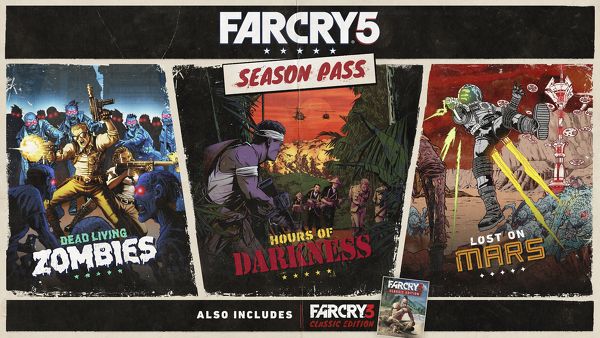
by Stone Marshall | Feb 10, 2018 | Awesome Book News, Free, Intro, Minecraft News, Minecraft questions, news, parent-news, State of Stone, Stone Marshall Book News, Stone Marshall Books, Stone Marshall Club, Stone Marshall Minecraft Adventures, Uncategorized |
Ubisoft has announced a bizarre trio of DLC packs coming as part of Far Cry 5’s season pass.The first DLC will be set in Vietnam and pit you against the Viet Cong. The second will be a B-movie-inspired zombies pack. The last will be set on Mars, where you fight alien arachnids.As a reminder, Far Cry 5 is set in present day Montana, USA.
And that’s not all – the season pass also includes a downloadable copy of the series’ high point to date: Far Cry 3, AKA the one with Vaas.
Ubisoft will release Far Cry 3 for PlayStation 4 and Xbox One this summer, but Far Cry 5 owners get the game a month early as part of the season pass.
Today also brings a new story trailer for Far Cry 5. See it below:
Far Cry 5 is now less than two months away – it arrives on 27th March. This isn’t the first time Ubisoft has decided to go all-out with its DLC, either – Far Cry 3 fans will remember the deliciously loopy sci-fi expandalone Far Cry 3: Blood Dragon.
Far Cry 5 season pass will take you to Vietnam and Mars

by Stone Marshall | Feb 10, 2018 | Awesome Book News, Free, Intro, Minecraft News, Minecraft questions, news, parent-news, State of Stone, Stone Marshall Book News, Stone Marshall Books, Stone Marshall Club, Stone Marshall Minecraft Adventures, Uncategorized |
Developer Bluehole has released a new update for PlayerUnknown’s Battlegrounds on PC, this one aiming to improve the divisive play experience of the game’s recently released desert map, as well as offering enhancements to its new anti-cheat system.
Battlegrounds’ desert map, also known as Miramar, now features more off-road routes for easier vehicle navigation, changes to item spawning in certain areas for better loot balance, and additional buildings and cover across the map – all designed, says Bluehole in its latest patch notes, “to improve the engagement experience”.
Many players in the Battlegrounds community have expressed dissatisfaction with Miramar and have, in the absence of an in-game map selection option (although one is apparently incoming), taken it upon themselves to find ways to remove it from play – ranging from manually deleting the relevant game files to deploying tools that automate the process.
Bluehole’s patch notes sound like a tacit acknowledgement to the community that Miramar, in its current state, perhaps isn’t where it should be from a gameplay perspective.
Elsewhere, alongside general fixes and an improved replay system, the latest update also iterates on Bluehole’s new work-in-progress anti-cheat measures.
Cheating has become the bane of many Battlegrounds players in recent months, with Bluehole struggling to stay on top of rule-breaking ne’er-do-wells. This new anti-cheat solution is the first phase in the developer’s attempts to minimise the disruption caused by cheaters, and to make for a fairer, more enjoyable gaming experience.
Bluehole notes that its new anti-cheat tech is still in the testing stage, “and its stability and compatibility need to be verified”. It’s being released now in order to “collect data about potential compatibility issues, analyze it and solve any issues that may emerge”.
PlayerUnknown’s Battlegrounds gets update to improve divisive desert map experience
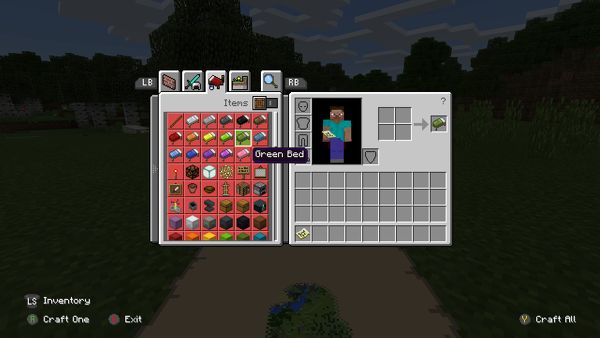
by Stone Marshall | Feb 9, 2018 | Awesome Book News, Free, Intro, Minecraft News, Minecraft questions, news, parent-news, State of Stone, Stone Marshall Book News, Stone Marshall Books, Stone Marshall Club, Stone Marshall Minecraft Adventures, Uncategorized |
When Microsoft announced Minecraft’s Better Together update, fans cheered. Minecraft feels built for cross-network play. It’s the world’s biggest family game, an experience designed with collaborative play in mind, and now truly open to everyone regardless of device (except PlayStation).
At least, that’s how it seemed. Sadly, the edition which has arrived on console is not quite what fans had envisioned.
Microsoft never did a great job of communicating the fact its Better Together Update is not actually an update for console owners. It’s a completely different game – one which is almost identical to Minecraft’s previous Pocket Edition for mobiles.
This change has already occurred on Xbox One, with the old Minecraft: Xbox One Edition replaced in the console’s store with a separate game client, just named “Minecraft”. Likewise, in the near future, Minecraft: Nintendo Switch Edition will also be left behind. Upgrading is free, but far from painless.

Minecraft’s crafting and inventory interface, designed for touchscreen or mouse control, has not been well received by console players.
Minecraft is Minecraft, right? Well, not really. Minecraft console developer 4J Studios has, for more than half a decade, built a version of Minecraft which feels great when played with a console controller. (Microsoft’s new version of Minecraft no longer lists 4J in the game’s opening splash screens.)
The new version of Minecraft has ditched the console version’s user interface completely. Your inventory and crafting are now organised using a different UI – shown above – from the mobile version of the game designed for a touchscreen, or for a mouse and keyboard.
Microsoft has a Minecraft feedback site set up to track user-requested fixes. Reinstating a console-style UI, at least as an option for Minecraft on console, is one of the highest requests out of more than 5800 ideas.
“This is the major reason that keeps me from moving away from Xbox One Edition,” one fan wrote. “I cannot stand the current BTU UI using a controller.”
“When playing on the Xbox, the Play Together UI is a large step backwards from what we have in the console edition, both in terms of layout and responsiveness,” another added.
“I’m honestly just gonna play regular Xbox One edition until they fix this, the new UI on Xbox is far, far worse and alienating to Xbox players,” a third fan agreed.
Other top requests include fixes for other casualties of Microsoft’s decision to base the new Minecraft on the game’s Pocket Edition: redstone and coordinates.

Minecraft’s various console editions showed your coordinates on a map. The new Minecraft does not.
Redstone (Minecraft’s equivalent of electrical wiring) has different systems on different platforms. The old console version was different to the Pocket Edition version – so imported worlds from Minecraft: Xbox One Edition now need redstone to be rewired to work.
Coordinates – being able to see your exact position on the game’s map – also worked differently, depending on platform. Knowing your position is a vital part of meeting up with other players, and correctly constructing large building projects.
On console, players have always been able to see their position on an X/Y/Z axis by holding any map item. On Pocket Edition, you could not do this. So, since this new version of Minecraft is based on the Pocket Edition, console players have been left without this option. (Microsoft has recently relented to allow coordinate viewing as a cheat – but enabling cheats will disable achievements and other stat tracking).
And then there’s the in-game store. Minecraft’s store is front and center when you load the game, the option to buy a world the first you need to scroll past before being able to dismiss the game’s latest patch notes.
The store already feels cluttered… and that’s if it even loads.
It is intrusive – and for the first time, console players are being offered packs from third-party sources. This new version of Minecraft has only been available for a couple of weeks, and the shop already feels bloated.

I don’t own these packs, but hitting the option to simply create a new world brings me a list full of them. The store feels like it has encroached way beyond the actual shop’s limits.
Finally, there are the bugs. I’ve found it incredibly difficult to transfer my world over from the previous Xbox One version of the game. I’ve tried this a couple of times, with mixed success. It’s a slow process, but that’s fine – give your world 15 minutes or so and it should be downloaded and converted to play instantly from now on.
“Should be” is the key here, however. I had to try three times on my home console before it actually worked and didn’t time out. I tried twice here in the office and both times failed, the last time hard crashing the whole console. Each time, I was waiting to play for more than half an hour in total. Not a great start. When my world did finally load, I couldn’t eat.

This happened a lot.
To put it bluntly, this new version of Minecraft is not the one I’m used to playing. I asked Microsoft about the issues raised here and from the thousands of fans on the Minecraft feedback website, but have not yet received a response.
Microsoft ran a beta for the Better Together Update before it rolled the game to everyone. I played it during this time and quickly went back to the previous Xbox One Edition – which I’m still playing on now, even though I know it will no longer be updated. I assumed Microsoft wouldn’t launch the Better Together Update until it had thought through Minecraft’s issues and made it friendlier for console owners. Sadly, perhaps due to the headline-grabbing nature of its truly remarkable cross-network play, it has launched with these issues intact.
Playing with fans across platforms undoubtedly still feels like the future for Minecraft – but right now on console, the option feels like it does not outweigh the Better Together version’s other issues.
Minecraft’s Better Together Update is a mess on console
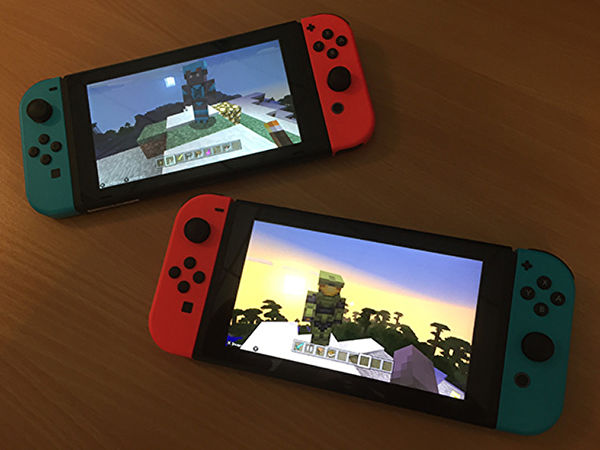
by Stone Marshall | Feb 9, 2018 | Awesome Book News, Free, Intro, Minecraft News, Minecraft questions, news, parent-news, State of Stone, Stone Marshall Book News, Stone Marshall Books, Stone Marshall Club, Stone Marshall Minecraft Adventures, Uncategorized |
Master Chief, Microsoft’s biggest gaming icon, is now available in Minecraft on Nintendo Switch.Characters from Banjo Kazooie (which was, obviously, originally released on N64), plus Fable and Gears of War franchises are also included in the skin pack, which launches today for both Switch and Wii U.
Xbox owners will likely have the pack already – it’s been available for years on Microsoft’s own consoles – but it also arrives for the new, unified version of Minecraft today across all of its platforms.
Somewhat oddly, the now-discontinued Minecraft: Xbox Edition also gets a new skin pack today for the Disney film Moana.
Minecraft: Xbox Edition is no longer available to buy and download – it has been replaced by the cross-platform Minecraft which, months on, still feels like the game’s mobile version plonked on a console with little more thought to it (because that’s exactly what it is).
I wrote about this new “Bedrock” version of Minecraft a while back, and called it a mess on console. Back in October, the Minecraft community was asking for a user interface tailored to consoles, like the old Xbox Edition had, and fixes for other things which the new version had changed (redstone, coordinates). Months on, it doesn’t seem like anything has changed.
You can now play as Master Chief in Nintendo Switch’s Minecraft
















